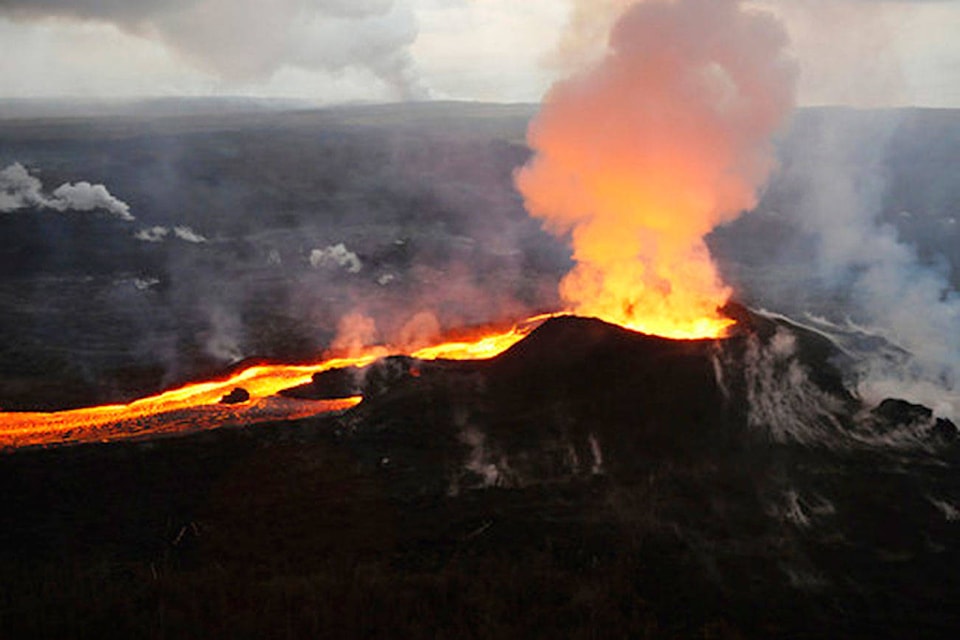In January 1993, Joan and I took our winter holiday in Montserrat, one of the less-visited islands of the Caribbean. It was so less-visited, it only had three hotels.
Four years later, the island’s volcano blew up. It buried the capital city in ash. To the rooftops.
We had stood on the edge of that volcano, watching steaming hot water bubbling out of orangey shale.
Then in January 2008, we went to St. Vincent, at the other end of the Caribbean chain of islands.
Five of us hiked up to the rim of St. Vincent’s volcano, past ferns growing 30-feet tall.
We peered down into swirling mists in the crater. I’d love to have gone down, but the rock walls were too sheer for anything but trained climbers with ropes and pitons.
Last week, the volcano on St. Vincent blew up. A pillar of smoke and ash soared 33,000 feet into the sky. TV showed skies as black as asphalt paving, ash ankle-deep in the streets of the main city at the other end of the island.
You might say that’s just a coincidence. There can’t possibly be any connection between my visits and the eruptions that followed.
But two out of two ain’t a bad batting average.
Before you worry about my mental health, no, I don’t feel responsible. Because I have also visited at least half a dozen other volcanos. In the Caribbean, on St. Kitts, Nevis and St. Lucia. In Costa Rica and Equador. Even here in Canada, near Terrace in northern B.C.
None of them have erupted since my visits.
But I contend that coincidences are not pure chance.
Part of the allure of the Caribbean islands is that they form one of the most tectonically active arcs on earth. The chain of islands has 17 active volcanos. If you go to the Caribbean, you go to volcano territory.
You may recall having read about Mont Pelée in Martinique. In 1902, a wall of particles superheated to incandescence incinerated the entire population of the town of St. Pierre – except for one man cowering within the thick stone walls of his prison cell.
Some people consider coincidences to be evidence of divine planning – these two distinct events were meant to happen together.
I see coincidence as depending on the observer, seeking a connection. I am the connection between the two volcanos. Without me, there’s no coincidence.
In a different context, I remember my congregation asking me to serve as board chair.
I felt I should accept. But I didn’t want to. I struggled with the decision.
Then one evening, I overheard part of a conversation. “The great thing about this congregation,” a member told a visitor, “is that you can say no, and they won’t hold it against you.”
Standing where I could hear that conversation was pure chance. Any other time, I would have paid no attention; her comment would have gone by, unnoticed.
But it was exactly what I needed to hear.
There are dozens, hundreds, of coincidences every day.
But we only notice them when we can make a connection.
Coincidences don’t depend on some outside force setting them up for us. They depend on us looking for a connection.
Jim Taylor lives in Lake Country.
rewrite@shaw.ca
